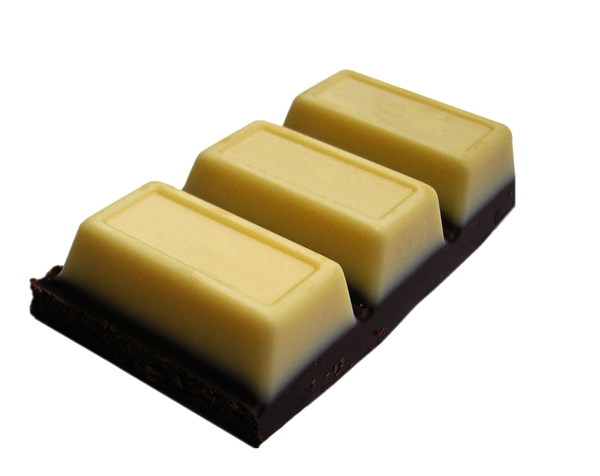What's the Difference Between White and Dark Chocolate?

Most people like chocolate. In fact, it's the most popular confection in the world. Some studies say that eating chocolate can help you live longe r; others say it can mimic the feeling of falling in love. The beloved candy is known for its deep brown color, but it also comes in a white variety. Is white chocolate really chocolate?
Chocolate, especially fine chocolate, is often sold according to how dark it is, with packaging touting a percentage say, 35 percent, 55 percent, 78 percent and so on that indicates the amount of cocoa powder solids and cocoa butter in the chocolate. The lower-percentage blends are closer to milk chocolate, while the higher-percentage blends are darker and less sweet.
White chocolate, on the other hand, is not technically a chocolate at all it's made without any cocoa powder or solids. That doesn't mean it's not delicious, of course, but white chocolate is just cocoa butter mixed with milk and sugar. (Cocoa butter is a vegetable fat, not unlike olive oil or corn oil, except it's derived from the cocoa bean.)
Related: The Truth About Cocoa Butter
As the website for the Fine Chocolate Industry notes, dark chocolate "should not contain any ingredients beyond: cacao liquor, sugar, cocoa butter, lecithin, and vanilla." In other words, cocoa butter is an ingredient in chocolate, but cocoa butter itself is not chocolate.
By the way, a higher percentage of cocoa doesn't necessarily mean better chocolate. The Fine Chocolate folks warn, "A higher cocoa percentage has little bearing on the quality. For example, a 70 percent chocolate may range from excellent to terrible."
- The Mysterious Health Benefits of Chocolate
- Why Do Wintergreen Candies Spark in the Dark?
- 10 Bad Things That are Good for You
Get the world’s most fascinating discoveries delivered straight to your inbox.



